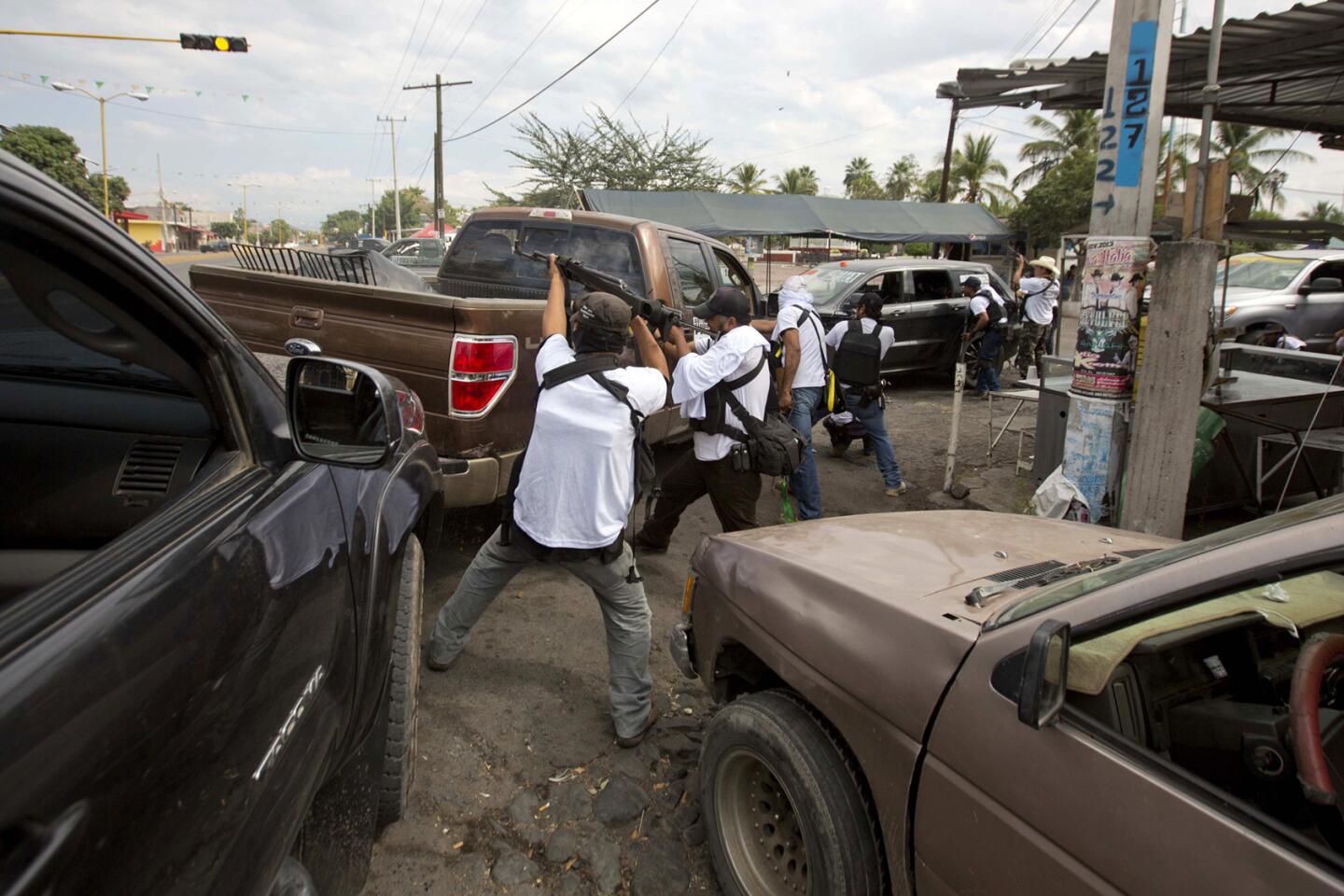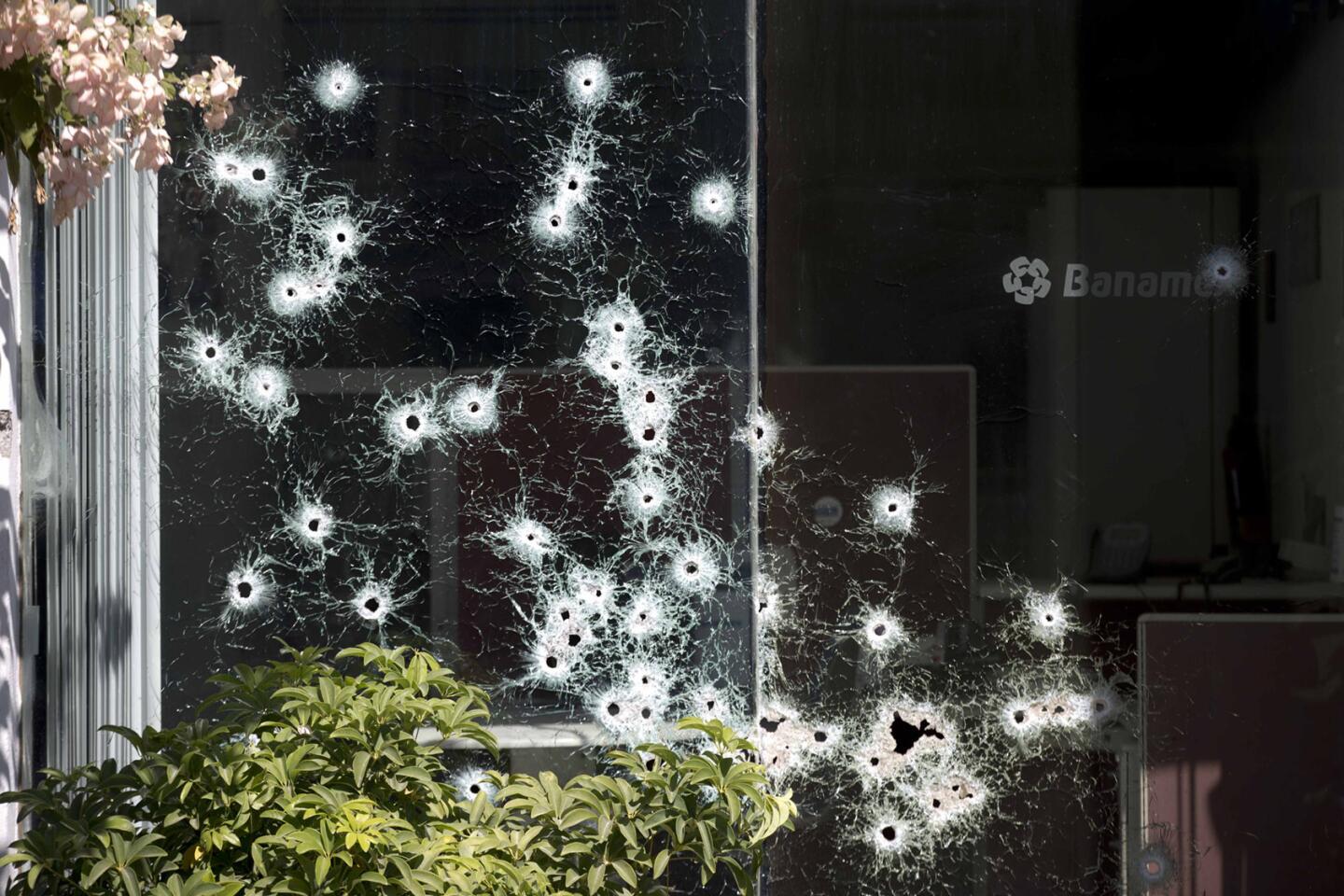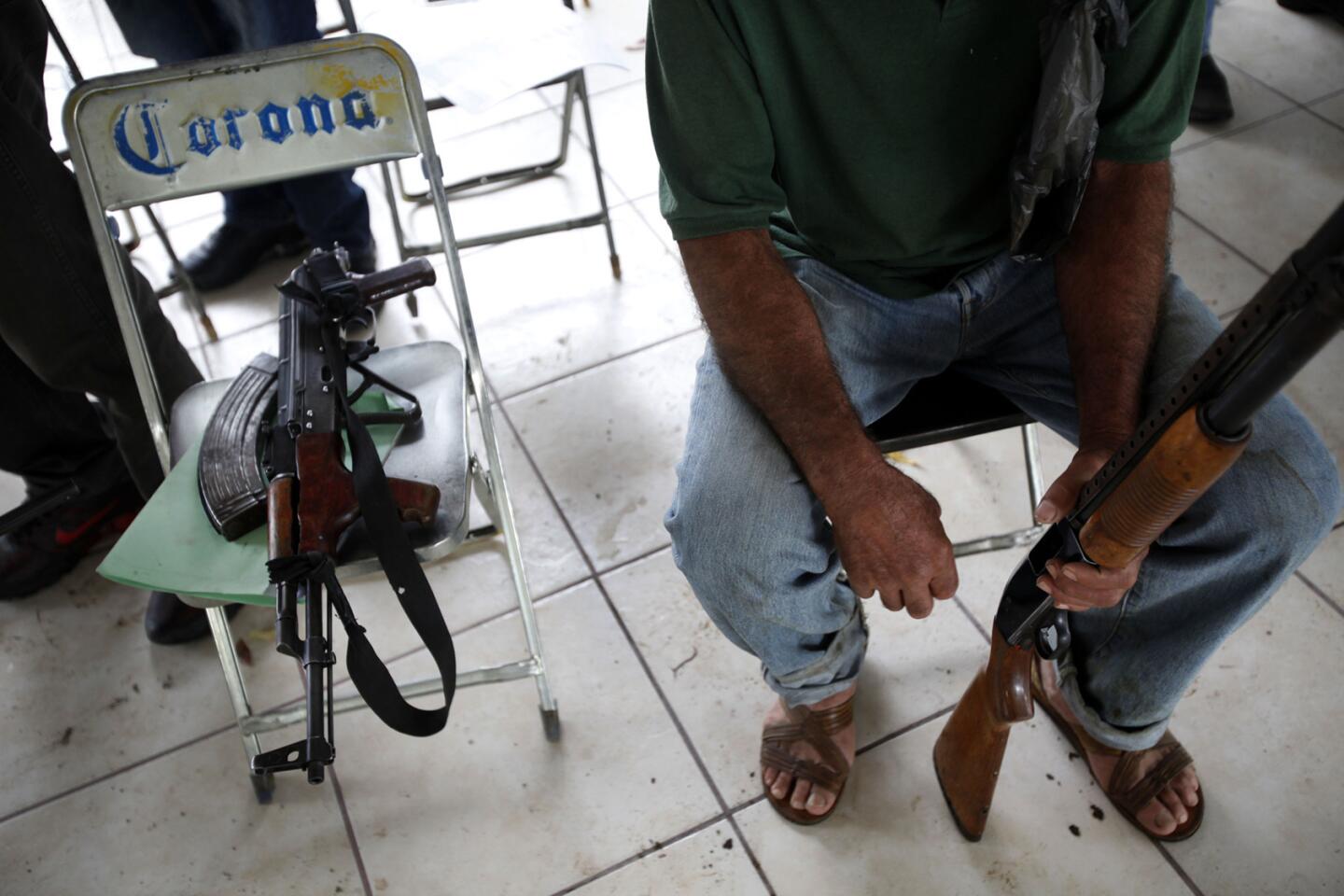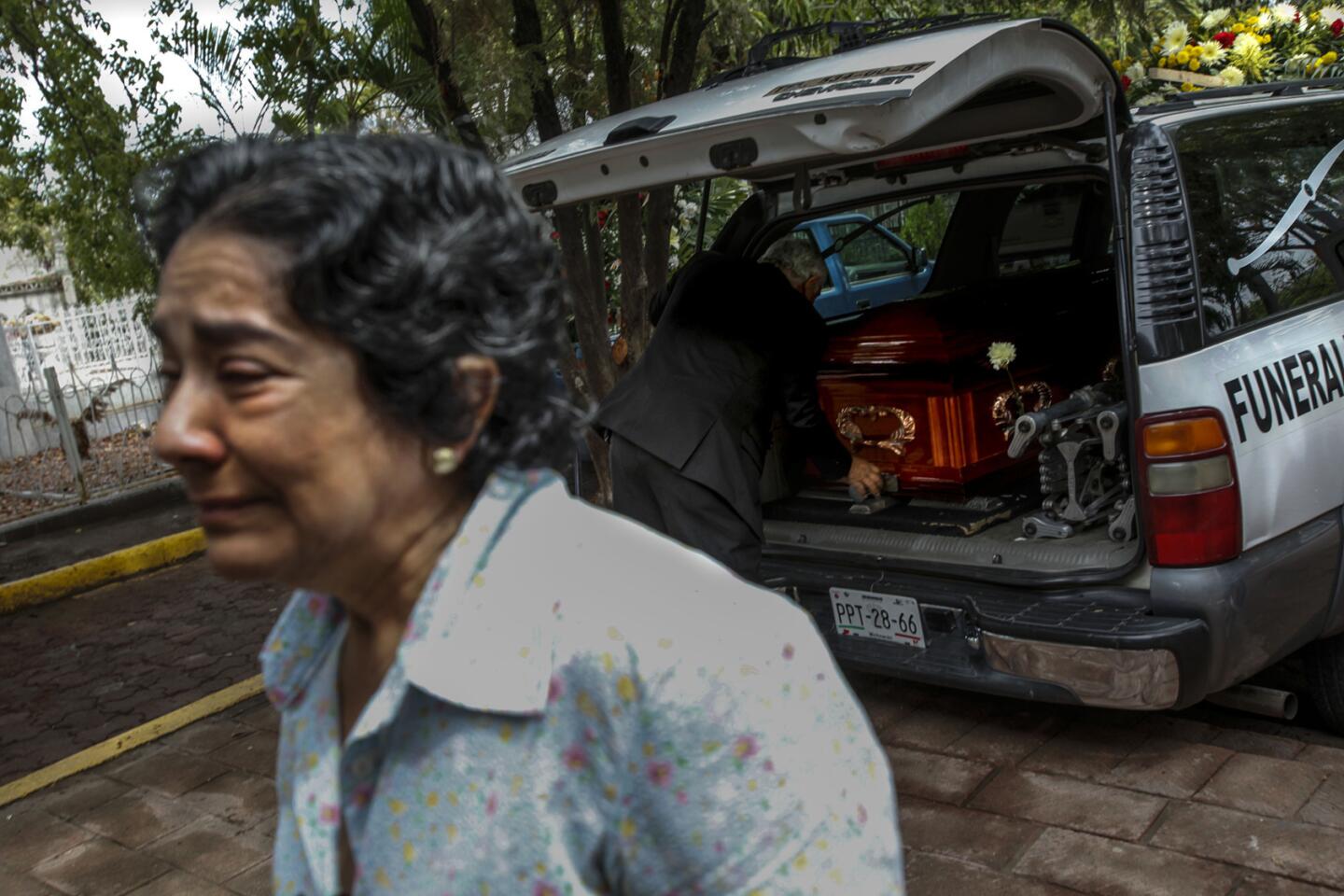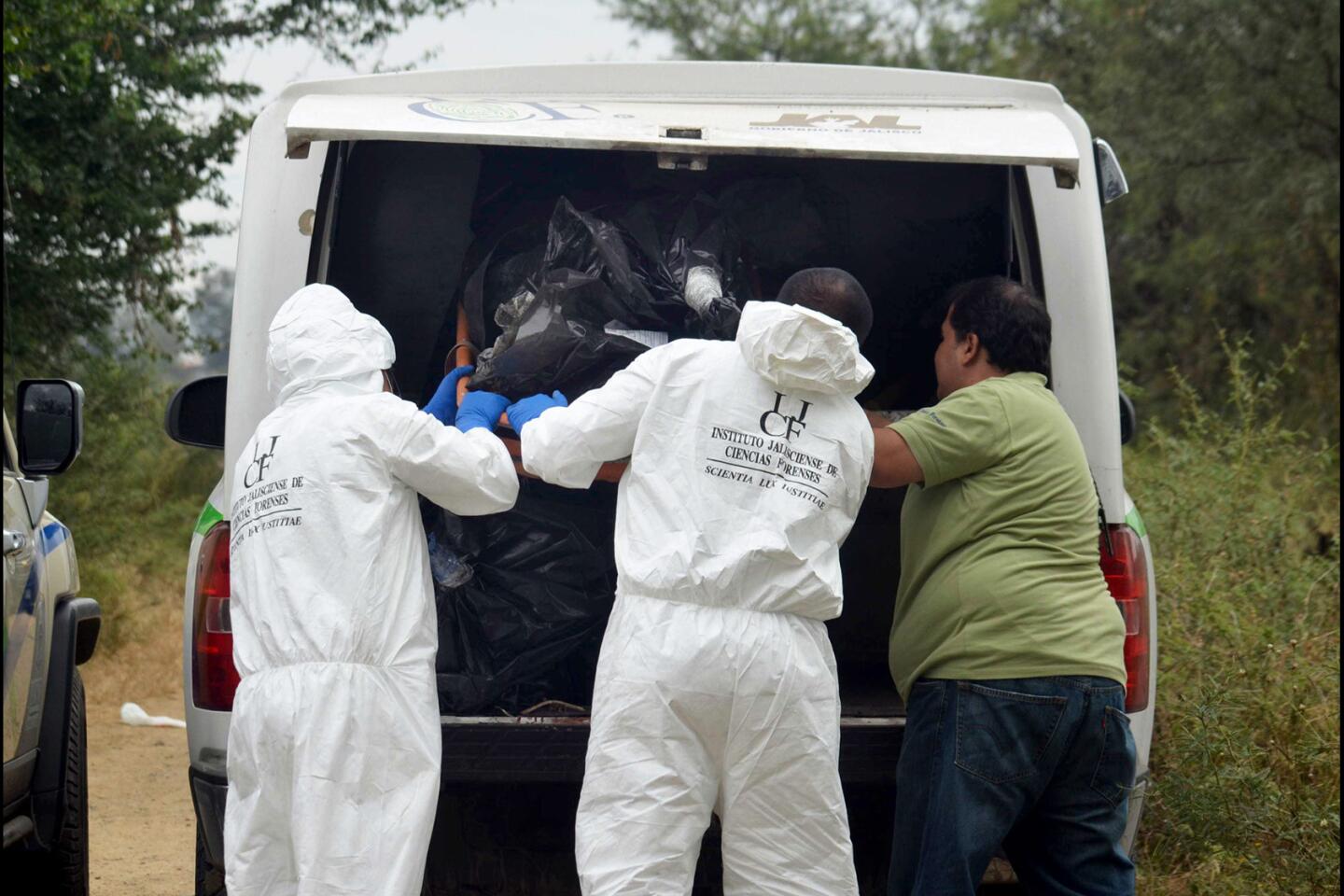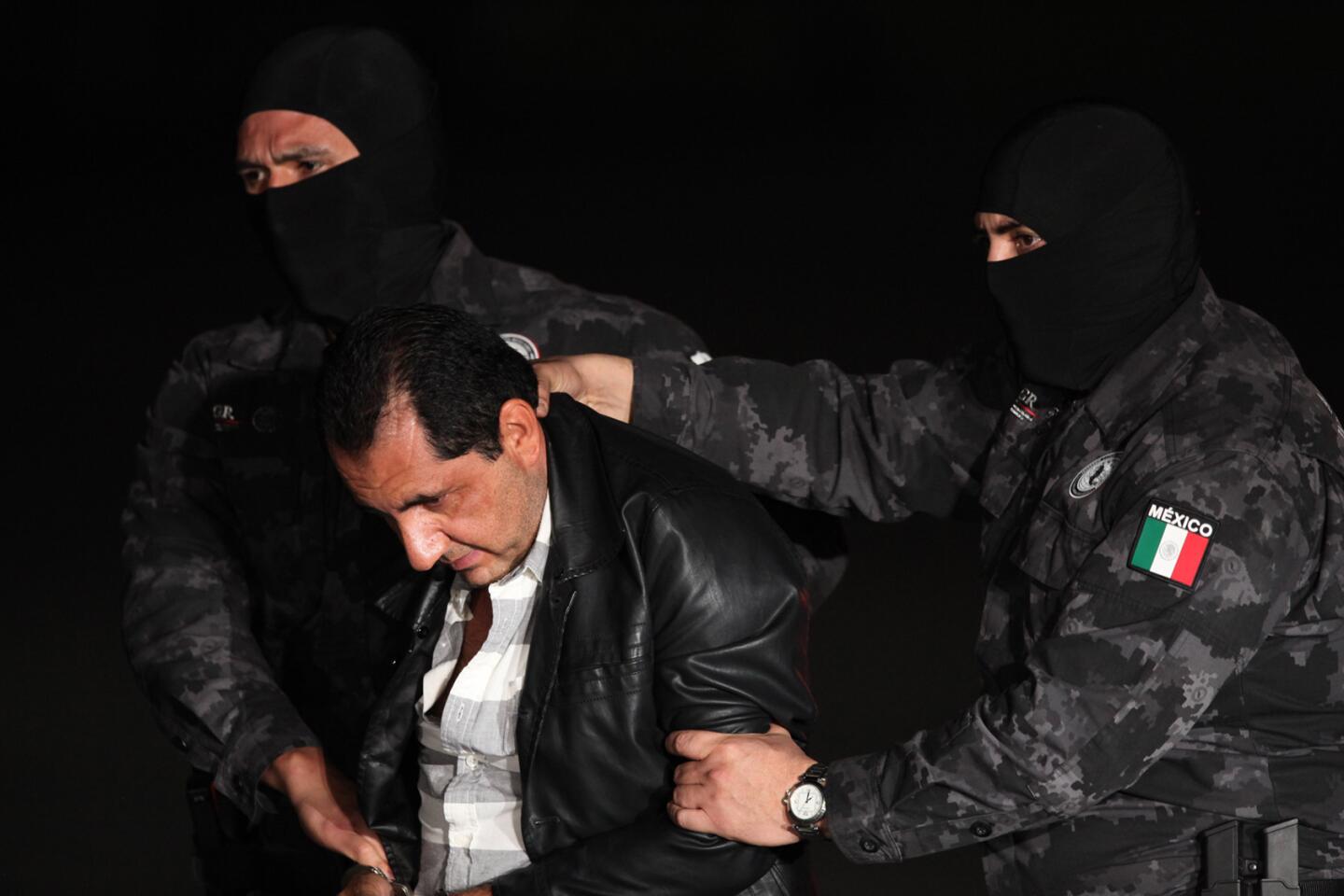Pope to visit Mexican state hit by narco-violence: ‘You are living your little piece of war’
- Share via
Reporting from Mexico City — When Pope Francis visits the western state of Michoacan next Tuesday, he will step into a plaza that holds the memory of one of the drug war’s most heinous acts of violence.
On Sept. 15, the eve of Mexican Independence Day in 2008, throngs of revelers had crowded the plaza in the state capital of Morelia when two grenades exploded, killing eight people, wounding hundreds and introducing an indiscriminate style of narco-terrorism that plagues the country to this day.
Tens of thousands of people have been killed or disappeared across Mexico in recent years, forming a map of violence that stretches from the jungles of Chiapas to the U.S. border. But few Mexican states have been harder hit than Michoacan, where the descent into near-anarchy has given rise to cult-like drug cartels and ragtag armies of farmers turned vigilantes.
Francis, whose six-day visit begins Friday, last week in a videotaped message told the Mexican people “you are living your little piece of war.” His one-day visit to Morelia, which will be heavily guarded by federal and military forces, will take him to the historic cathedral, which sits on the same plaza struck by the grenade attack.
Hundreds will be gathered inside, including some who were victims of drug violence, according to local media reports. Later, tens of thousands will hear him at a stadium gathering.
“People [in Michoacan] look to the pope’s visit as an opportunity to move beyond the past,” said Fernando Martinez Elorriaga, a professor at the Autonomous University of Mexico, who does research in Michoacan. They hope “that his blessings will bring peace and tranquillity to a state overrun with violence.”
The violence, which erupted in the mid-2000s, is rooted in the battle over control of methamphetamine production, and grew as organized crime groups expanded their reach to extortion and kidnapping, turning the terrain of mist-covered mountains and fertile valleys into some of the most lawless lands in Mexico.
The two main organized crime groups — La Familia and its spinoff, the Knights Templar — espoused pseudoreligious teachings while dominating all corners of society, from city halls to police stations and media.
The federal government’s failure to restore order, most notably in the late 2000s when the corruption cases against 35 government and law enforcement officials unraveled, eventually gave rise in 2013 to a fierce anti-cartel vigilante movement.
Led by avocado and lime farmers angry at being extorted by criminal groups, the masked vigilantes roamed the state, erecting roadblocks and waging fierce gun battles with drug traffickers. The vigilantes included many former residents of the United States. Michoacan has sent more migrants to the U.S. than almost every other Mexican state, and fundraisers for the vigilantes have been held in cities from California to New York.
The pope’s visit has raised hopes that he will ask the government to free hundreds of vigilantes who remain in prison on weapons charges. Though some vigilante groups were infiltrated by traffickers, they enjoy widespread support in some areas. One imprisoned vigilante leader, Jose Mireles Valverde, a physician who lived 10 years in Modesto, Calif., is praised as a “hero” in an article posted on the homepage of the archdiocese of Morelia.
“If Michoacan wants peace and tranquillity there must come a period of reconciliation, and that reconciliation can’t happen unless these people are freed,” said Ignacio Mendoza, the attorney for Mireles and 200 other vigilantes.
Vigilante leader Hipolito Mora, a lime grower released from prison last year, said in a phone interview that the pope’s intervention could be a turning point. Mora says the government allowed crime to flourish and then fabricating charges against the vigilantes, people who were forced to take a stand.
See the most-read stories this hour >>
The pope’s visit could also bring uncomfortable attention to the church’s ambiguous role during the drug war. Though many priests have been killed, there have been few sustained efforts to provide leadership against the cartels, say many experts. Suspicions have long swirled that some churches are compromised through the practice of narco-limosnas, or drug-tainted donations used to build gaudy churches in drug-trafficking regions.
Francis may take the opportunity to urge clerics to take a more active role in building communities and youth programs resistant to the pull of organized crime. Thus far, the church’s efforts, with some exceptions, have been paltry, said David Shirk, director of the Justice in Mexico Project at the University of San Diego.
“The fact that the current pope is coming to Mexico and emphasizing the issue of crime and violence, and going to places that have been hardest hit ... sends a very loud signal, particularly in contrast to the position the church has taken, which is one of almost abandoning the flock,” Shirk said.
Timothy Matovina, a professor of theology at the University of Notre Dame, said Francis is known to push for change at local churches. “He has not been shy of taking on the local bishops and clergy in places he has visited, and saying, ‘We’re the shepherds, working for the church of Christ here, we have to be bold and stand up for the gospel and stand up for what’s right,’” Matovina said.
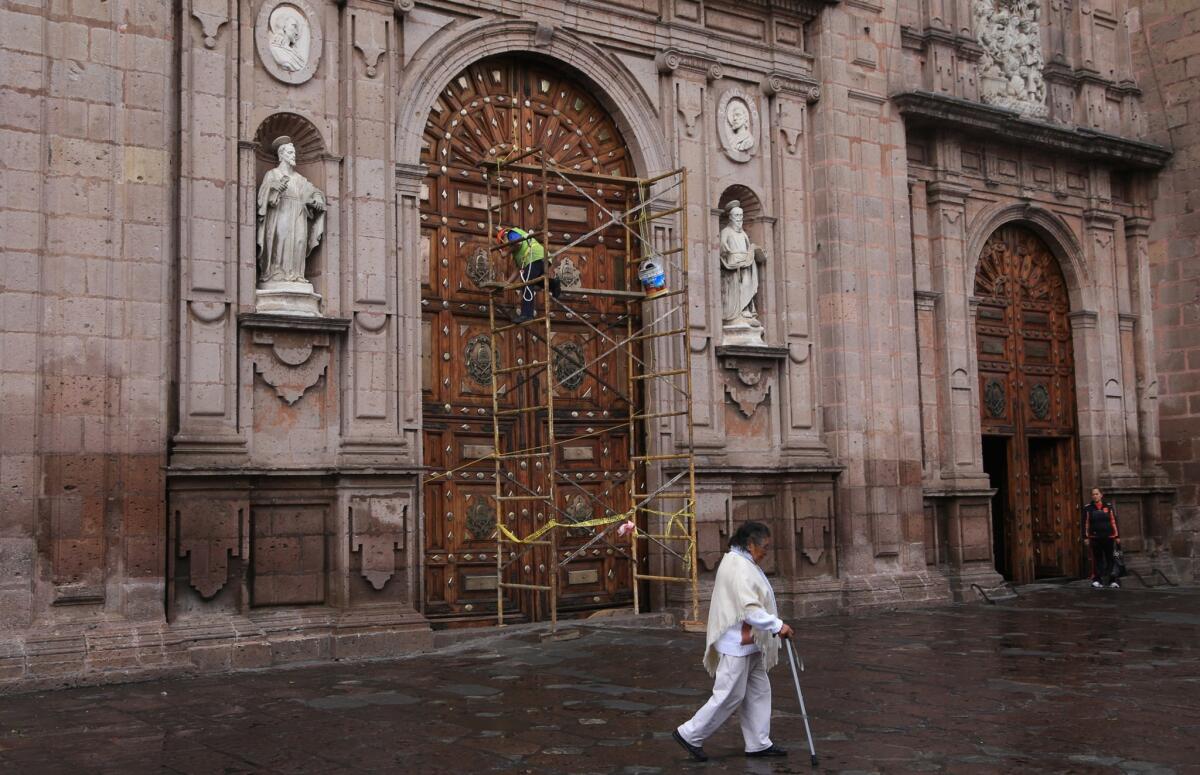
Workers clean the entrance of the cathedral in Morelia, where Pope Francis will say Mass on Feb. 16. The plaza opposite the cathedral was the site of one of the more horrific incidents of drug cartel violence: a 2008 grenade attack.
The pope arrives at a time of relative tranquillity in Michoacan, with drug trafficking groups in retreat after the arrests and deaths of key cartel leaders. But ominous signs remain.
Gunmen claiming to be vigilantes, in a videotaped message last week, threatened armed insurrection unless the government finishes off the Knights Templar. In the video, a masked man flanked by two gunmen said their group would hold off its offensive until after the pope’s visit.
The pope has lashed out directly against criminal groups elsewhere. In Rome in 2014, he strongly denounced the Italian Mafia, telling mafiosi they would go to hell if they didn’t renounce their “bloodstained money and bloodstained power.”
Such language can have an impact, for even drug traffickers have a hard time dismissing the pleas of devout family members who hear the pope’s message, said Shirk.
“Traffickers love their moms,” Shirk said, “and moms love the church.”
Twitter: @ricardin24
MORE FROM WORLD
On the eve of Pope Francis’ arrival in Mexico, not everybody is so welcoming
In war-torn Afghanistan, astronomer sees hope and promise in the study of the heavens
Five years on, Tahrir Square activists look back at Egypt’s revolution: ‘Maybe we were naive’
More to Read
Sign up for Essential California
The most important California stories and recommendations in your inbox every morning.
You may occasionally receive promotional content from the Los Angeles Times.
